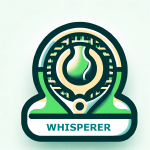Game Changers: How Court Surfaces Impact Your Playing Style
One of the Men’s Championship finalists commented that the synthetic grass courts at Manly felt tougher to play on compared to hard courts.
Ever wonder why your game feels effortless on some courts but a bit off on others? The surface underfoot can make all the difference! Here’s a quick guide to how synthetic grass, hard, and clay courts each influence your game—and some strategies to help you adapt and compete on each one.
🟢 Synthetic Grass Courts: Fast & Lower Bounce
Synthetic grass courts are fast and often have a low, skidding bounce, similar to natural grass. This surface favors aggressive play, allowing for shorter points and quick-fire exchanges.
- Best Playing Style: Serve-and-volley players and net rushers dominate here. The low bounce lets you take control early and rush the net, keeping your opponent on the defensive.
- Key Strategies: Focus on flat, low shots to keep rallies short. Be ready to take time away from your opponent by closing in on the net and using quick reflexes.
Strategy: Precision on serves and returns is key on synthetic grass. Try hitting low, slicing serves to force weak returns. This surface rewards a “first-strike” mindset—so go for it!
🔵 Hard Courts: Balanced & Predictable
The most common court type, hard courts offer a balanced mix of speed and bounce, making them ideal for players with all-court versatility.
- Best Playing Style: Hard courts are friendly to all styles—from aggressive baseliners to serve-and-volley players.
- Key Strategies: Use a combination of power, consistency, and variety. Adapt to your opponent by switching between offense and defense, exploiting the predictable bounce for solid baseline play.
Strategy: Footwork is critical. Rely on controlled, precise movements and adjust quickly to maintain your position. Hard courts reward versatile play, so be ready to switch tactics mid-point.
🟤 Clay Courts: Slow & High Bounce
The slowest surface with a high bounce, clay courts reward patience, endurance, and a tactical approach to point construction.
- Best Playing Style: Baseline players and counter-punchers thrive here. Heavy topspin and strong defense are crucial to outlasting opponents.
- Key Strategies: Master topspin shots to control the rally, and use drop shots and lobs to keep your opponent moving and off balance. Sliding is essential to cover the court efficiently and conserve energy.
Strategy: Build points with patience. Use high topspin to push your opponent deep, creating opportunities to attack when they’re out of position. Clay demands endurance, so be prepared for longer, more tactical rallies.
Each surface requires unique skills and adjustments to excel, shaping how you move, strike, and strategize. By adapting your game to the surface, you can boost your performance and embrace the nuances of each court. Whether you’re sliding on clay, powering through on hard, or attacking on synthetic grass, learning to adapt is the key to mastering any surface! 🎾💥
**Note**: Even within the broad categories of synthetic grass, hard courts, and clay, there can be substantial variations in how each surface plays. For instance, the amount of sand used on synthetic grass courts affects speed—more sand generally slows down the play. Hard courts also differ significantly based on the type of coating applied and even the court’s orientation. Courts laid lengthwise versus crosswise can impact speed and ball response, creating unique playing experiences.
The key question is: how can you adapt your game to different surfaces? That’s a topic for another post!



